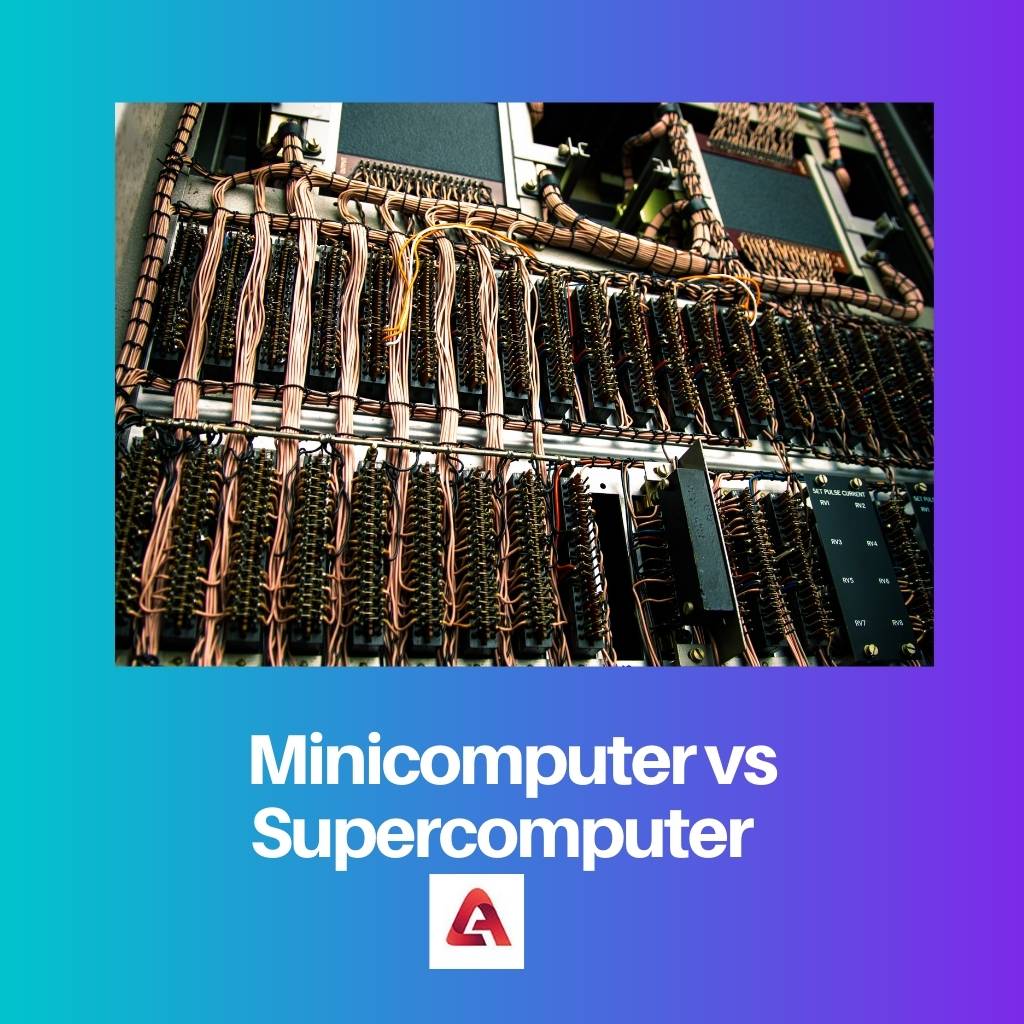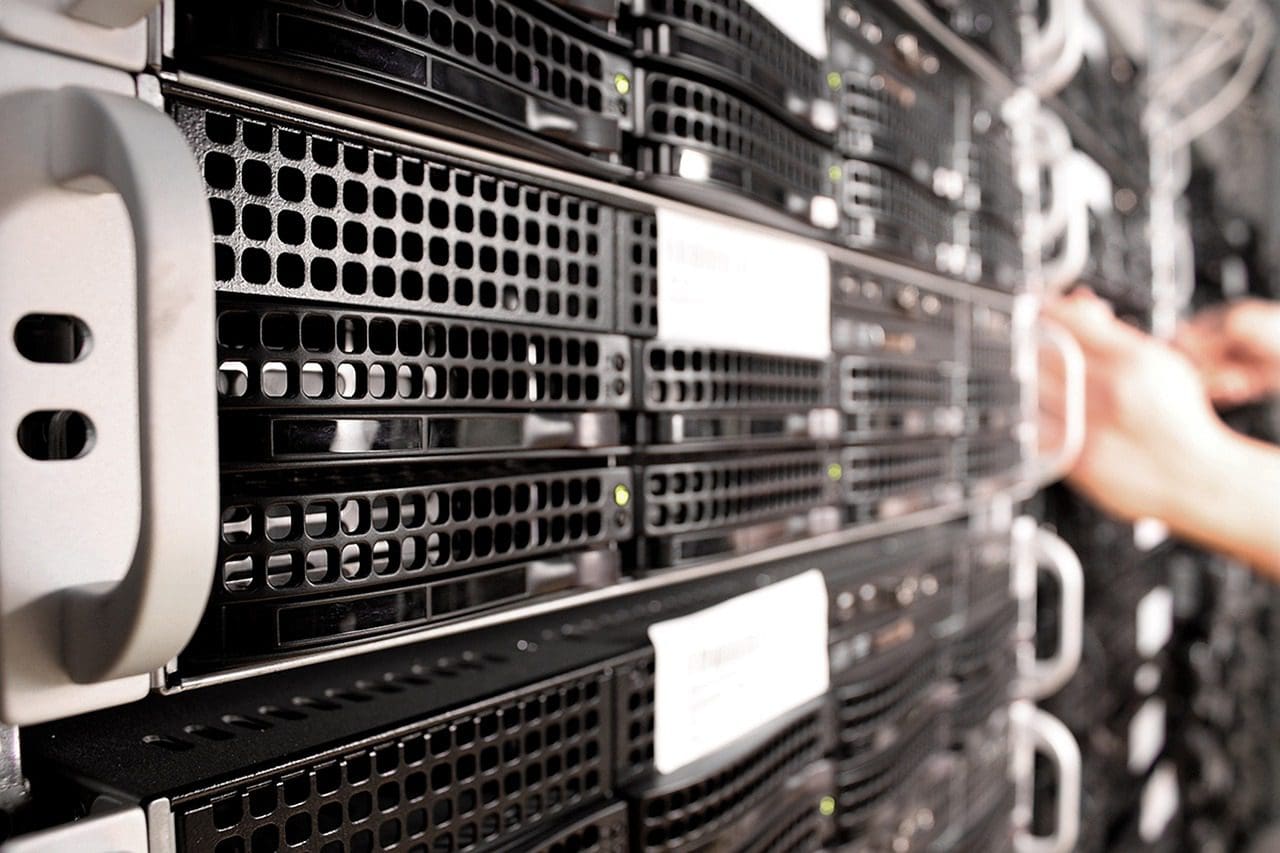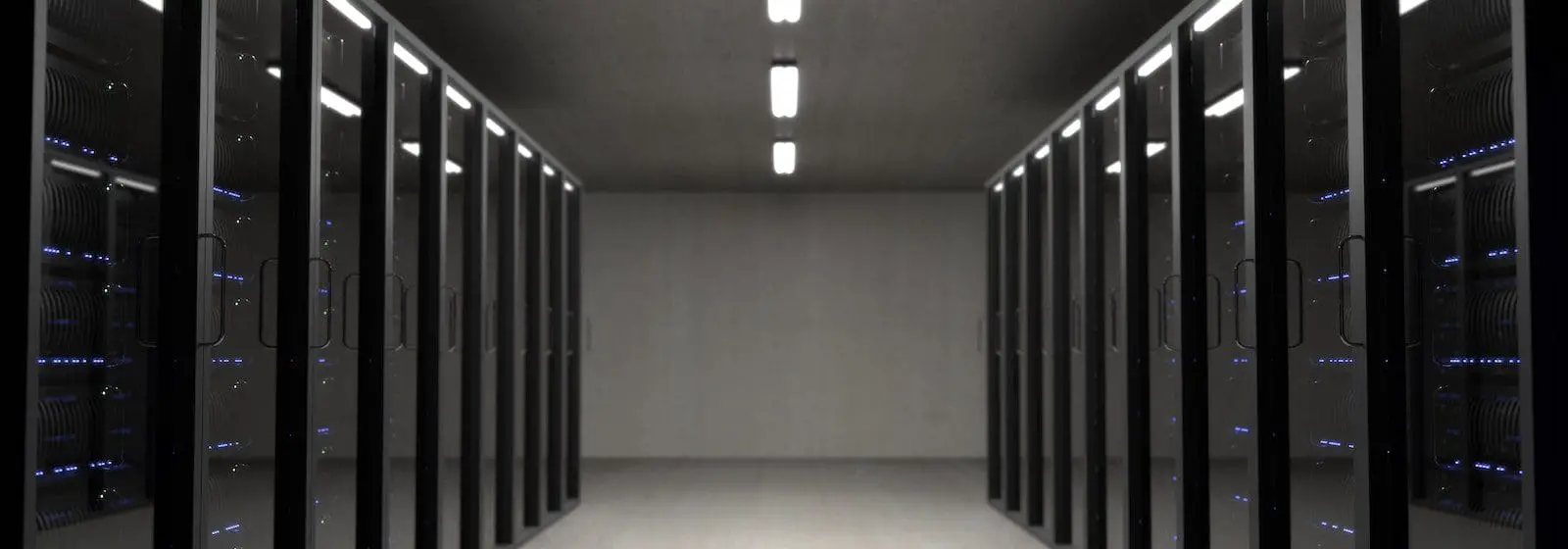In a world where everything is getting digitalized day to day, the computer plays a very important role in the contemporary era. The term “computer” simply stands for a machine that is programmed to carry out tasks to fulfill data sent by a user.
The computer has evolved for a long time and still evolving. Therefore, the computer can be classified in many ways.
Microcomputers and supercomputers come in the category of differentiation based on size.
Key Takeaways
- Minicomputers are smaller than mainframe computers but larger than microcomputers.
- Supercomputers are the fastest and most powerful computers available.
- Minicomputers are used for scientific and engineering applications, while supercomputers are used for high-performance computing tasks.
Minicomputer vs Supercomputer
The difference between minicomputers and supercomputer is that minicomputers can cover up to a few 19-inch rack cabinets whereas supercomputers could fill a room. When it comes to power, minicomputers are less powerful than mainframes or supercomputers.

The word mini in minicomputer doesn’t stand for its power or size, which is of low quality. It is used in labs for instrumentation systems and not for general purposes. It was introduced to the world in the mid-1960s.
After its great success in the mid-1960s, it started declining. As a result, mini-vendors began to rapidly disappear during that period.
Supercomputers come under the class of extremely powerful computers. It simply stands for the fastest high-performance systems available at any given time. It was launched in the 1960s.
Although early supercomputers were built by various companies, one individual, Seymour Cray, defined the product almost from the start. He designed the CDC 6600 in 1964, which became the fastest computer in the world.
Comparison Table
| Parameters of comparison | Minicomputer | Supercomputer |
|---|---|---|
| Introduced | In mid-1960s. | In 1960s. |
| Word Size | 8-18 bits. | 64 bits. |
| Speed | Minicomputer speed range is of 10-30 MIPS. | Supercomputer speed range is of 100-900 MIPS. |
| Memory Size | 32,000- 64,000 16bit words or 16,000- 32,000 32-bit words. | 200 to 300 gigabytes. |
| Fulfill | Computing needs of several people in small to medium- sized business. | Engineering problems and scientific calculating. |
What is Minicomputer?
A minicomputer is also called a mid-range computer because it is more powerful than a personal computer but less powerful than a mainframe or supercomputer. In 1964, Digital Equipment Corporation (DEC) launched a 12-bit PDP-8 which was termed a minicomputer.
Highlighting features of PDP-8 are its small size, low price, and fit for general purposes.
Due to its success, the whole industry of minicomputer companies was set up in the mid-1960s when 7400 series integrated circuits were launched, leading to integrated circuit design improvement.
As a result, minicomputers benefited a lot in terms of size, manufacturing process, and expense.
Mainly, they were used in order to control the manufacturing process and laboratory equipment. Later, several minis entered the market, such as 24 and 32-bit.
They referred to DEC’s 1977 VAX as a super minicomputer.
With time, high-end computers offered performance just like low-end and mid-range minis. As a result, Motorola 68020, National Semiconductor, and many more started hitting the market.
Minis retained a force for those using existing software products or those who required high-performance multitasking.
But the introduction of newer operating systems based on Unix began to become highly practical replacements for these roles as well. At last, led to rapidly disappearing through this period.
In the contemporary world, only a few architectures of minicomputers survive.

What is Supercomputer?
The supercomputer is also called a Mainframe computer. Its performance is measured in FLOPS, which stands for floating operations per second.
This is the first such machine that ran faster than more a general-purpose computer. With the passage of time, one to four processors and parallelism were added.
One of the very first supercomputers was Livermore Atomic Research Computer (LARC), which was built by UNIVAC in 1960 for the US Naval Research Center.
Also, IBM 7030 stretch is included in the first supercomputers, which is 100 times faster than as existing computer at that time. In 1955, IBM was launched for the Almos National Laboratory and completed in 1961.
Atlas, which was built by Tom and his team at the University of Manchester in the early 1960s considered the third supercomputer, which was designed in order to operate at a processing speed of up to one million instructions per.
Seymour Cray, after designing the fastest computer in the world, namely CDC 6600 in 1964, left CDC to form his own company Cray Research in 1972.
Cray delivered Cray-1 in 1976, which is considered one of the most successful supercomputers in history. Later, in 1985, Seymour Cray released Cray-2 which is the first supercomputer to break the gigaflop barrier.

Main Differences Between Minicomputer and Supercomputer
- Minicomputers can cover up to a few 19-inch rack cabinets, whereas a supercomputer could fill a room.
- Minicomputers fulfill computing tasks such as scientific and engineering, database management, and business transaction processing. On the other hand, Supercomputer is used in applications related to engineering or scientific research, weather forecasting, aerospace, petroleum, and automotive industries.
- The minicomputer speed range is 10-30 MIPS. In contrast, the Supercomputer speed range is 100-900 MIPS.
- Minicomputers is very less expensive than Supercomputers as Supercomputers are quite expensive.
- In terms of feet, Supercomputer can cover up to 5,600 sq. feet, whereas a Mini-computer covers less than 0.6-meters (two feet)


The article effectively presents the distinction between minicomputers and supercomputers, shedding light on their unique functionalities and applications.
I completely agree. The article offers a comprehensive overview of the differences and technological aspects of these computing systems.
Learning about the history and development of minicomputers and supercomputers is truly intriguing. The impact of these advancements on various fields is profound.
Absolutely, the evolution of computing systems has revolutionized the way we approach complex computational tasks.
The historical background provides valuable context for understanding the significance of minicomputers and supercomputers in modern society.
The details about the differences between minicomputers and supercomputers offer great insights into the world of computing and its broad applications.
It’s fascinating to see how the size and computing power have varied between minicomputers and supercomputers. This comparison provides a great understanding.
Absolutely! Understanding the distinctions in power and functionality is very informative.
The detailed account of the evolution and features of minicomputers and supercomputers provides a comprehensive understanding of their role in technology and innovation.
The detailed description of the minicomputer and supercomputer highlights their applications and reinforces their importance in technology and scientific advancements.
I couldn’t agree more. The specific applications help in realizing the critical role these computers play in advancing knowledge and innovation.
The historical accounts and details about the origins of minicomputers and supercomputers are enlightening. It’s incredible to see how they have adapted and advanced over time.
The narrative of their development and gradual advancements offers valuable insights into their significance in computing history.
The historical context is indeed captivating and helps in appreciating the technological progress in computing.
The comparison table is quite comprehensive and helps in understanding the specific features and capabilities of minicomputers and supercomputers.
The table indeed provides a clear overview of the technological aspects related to these computing systems.
I find the comparison table to be very useful, especially for those who are interested in the technical specifications of computers.
The history of supercomputers is really fascinating, it’s amazing to see how they have evolved over time and become one of the most important tools for scientific research and development.
I completely agree. The technological advancements have been incredible and it has opened up a whole new world of possibilities.
The evolution of minicomputers and supercomputers, from their early days to modern contexts, showcases their journey and progression in technology.
Absolutely, understanding their evolution provides insights into how these systems have shaped technological developments.
The detailed information about the technical specifications and performance features of minicomputers and supercomputers is both engaging and informative.
Absolutely, the breakdown of technical details provides a comprehensive understanding of these computing systems.
The technical insights are indeed valuable for understanding the capabilities and functions of both minicomputers and supercomputers.